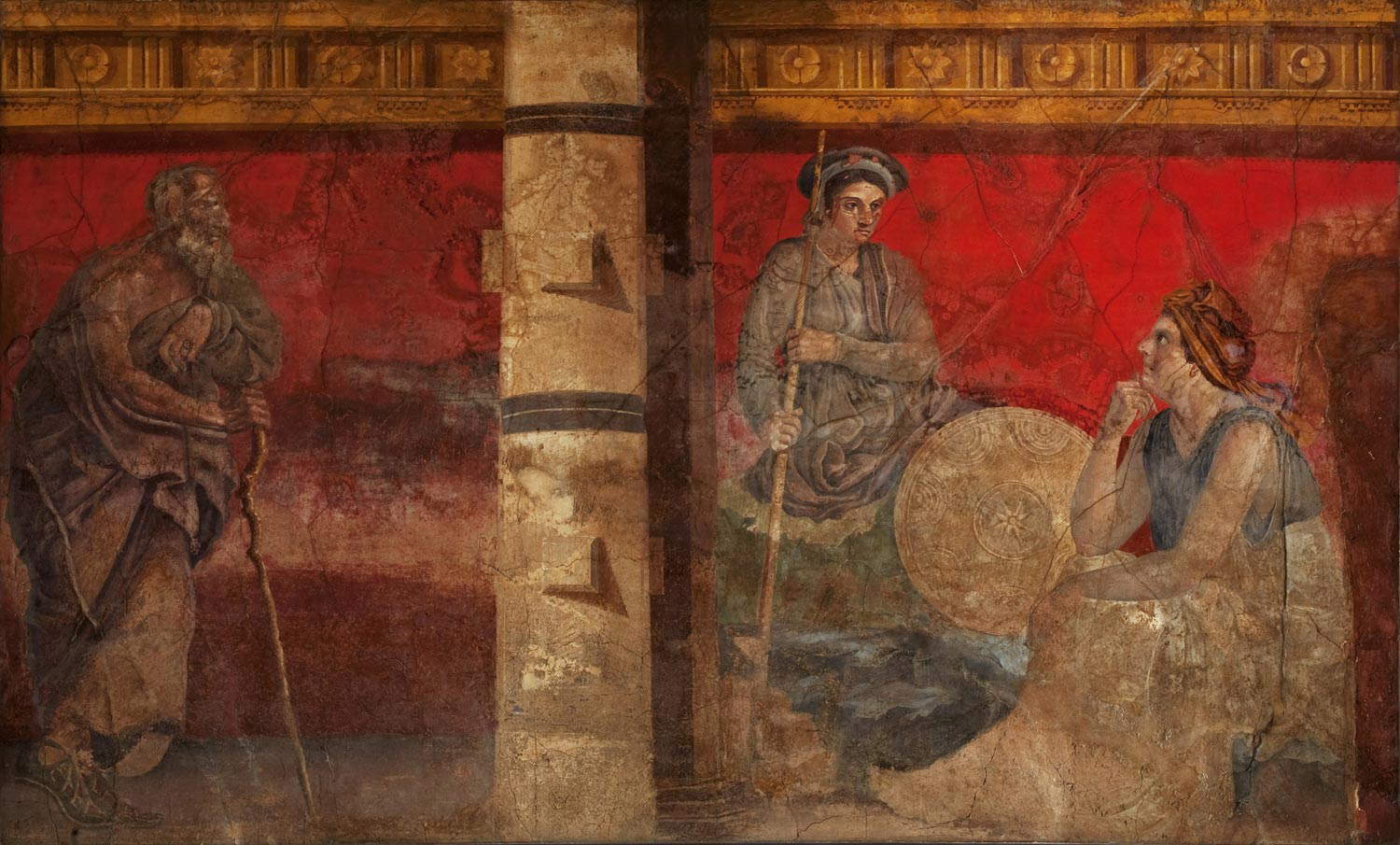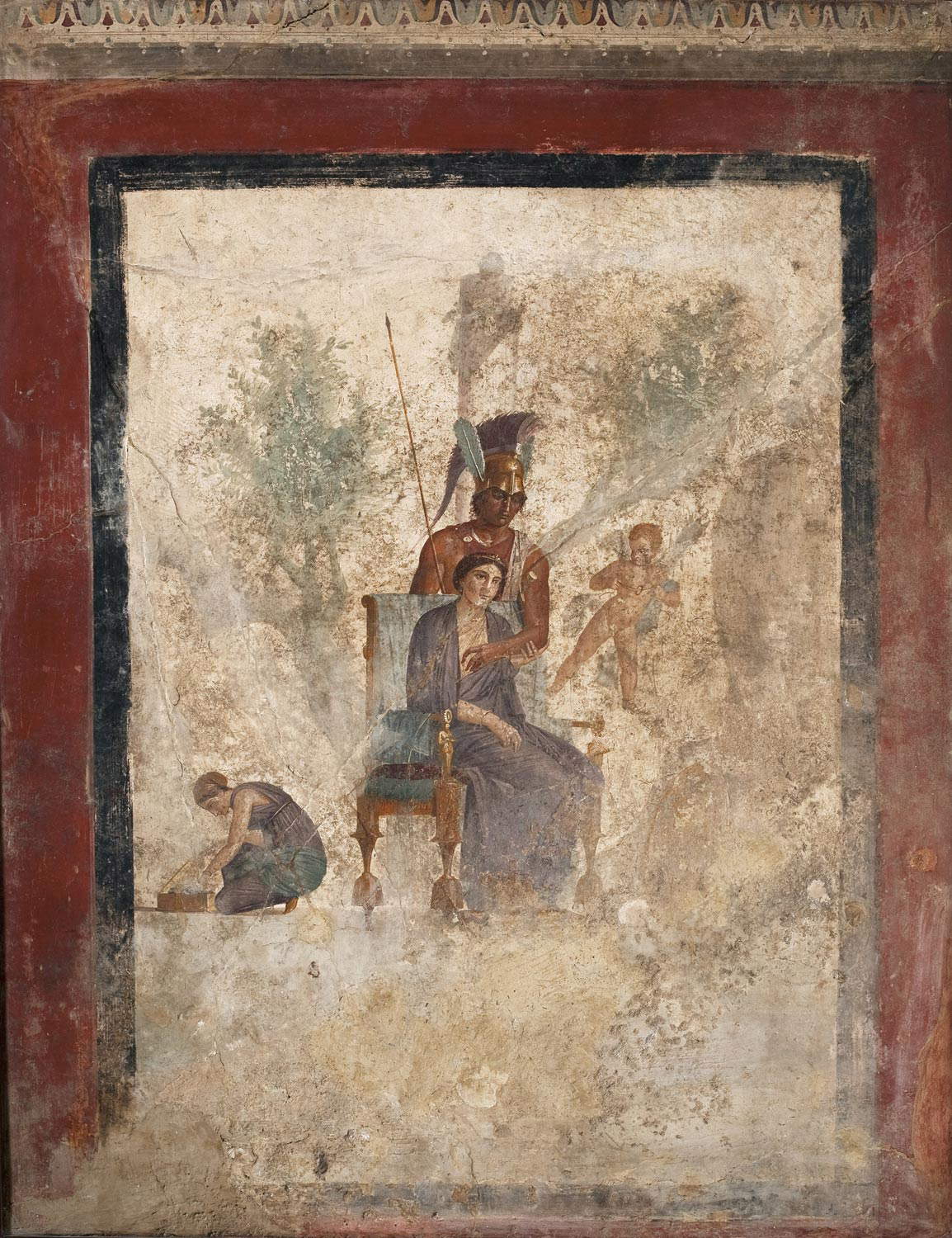From September 23, 2022 to March 19, 2023, the Museo Civico Archeologico di Bologna will host the exhibition I Pittori di Pompei, curated by Mario Grimaldi and produced by MondoMostre, in its exhibition spaces.
The protagonists of the exhibition project will be the pictores, or the artists and artisans who gave life to the decorative devices in the houses of Pompeii, Herculaneum and the Vesuvian area. The aim is to contextualize their role and economic status in the society of the time, as well as to highlight their techniques, tools, colors and models. Indeed, the splendid frescoes with their still vivid colors, often of large dimensions, restore the tastes and values of a varied patronage and gives the possibility to better understand the mechanisms of the workshops’ production system. Little information has come down to us about the authors of these works, and almost no names are known to us. Thanks to the numerous pictorial testimonies preserved after the eruption that occurred in 79 CE and brought to light by the great Bourbon excavation campaigns in the eighteenth century, the Vesuvian towns constitute a privileged observatory for a better understanding of the internal organization and activity of the painting workshops.





For the first time in Bologna, a corpus of extraordinary examples of Roman painting from those domus that became famous for the beauty of their wall decorations will be on public view. Just to name a few, masterpieces from the domus of the Tragic Poet, of Punished Love, and from the Villas of Fannio Sinistore in Boscoreale, and of the Papyri in Herculaneum. A wide selection of the most widely used compositional schemes from different periods of Roman art will be on view, understanding how some artists knew how to give an original vision of decorative patterns that were continually varied and updated based on local fashions and styles.
Relive scenes of welcoming guests, refined images of landscapes and gardens, architecture, but also admire the technical tools of design and execution of the work: paints, squares, compasses, plumb lines, preparatory drawings, original finds unearthed during Pompeian excavations, including cups still filled with colors dating back two thousand years. And, again, triclini, oil lamps, pitchers, vases, resurfaced in the excavations and depicted in the very frescoes on display, with which they dialogued in space.
The exhibition is made possible thanks to a cultural and scientific collaboration agreement between the Municipality of Bologna | Museo Civico Archeologico and the National Archaeological Museum of Naples, which includes the extraordinary loan of more than one hundred works from the Roman period belonging to the collection of the National Archaeological Museum of Naples.
Finally, the reconstruction of entire Pompeian rooms will be proposed, including those of the House of Jason and, in particular the House of Meleager with its large frescoes with stucco reliefs, to tell the story of the relationship between space and decoration, between the pictores and their patrons.
 |
| The painters of the domus of Pompeii. An exhibition in Bologna with more than 100 works from the MANN in Naples. |
Warning: the translation into English of the original Italian article was created using automatic tools. We undertake to review all articles, but we do not guarantee the total absence of inaccuracies in the translation due to the program. You can find the original by clicking on the ITA button. If you find any mistake,please contact us.